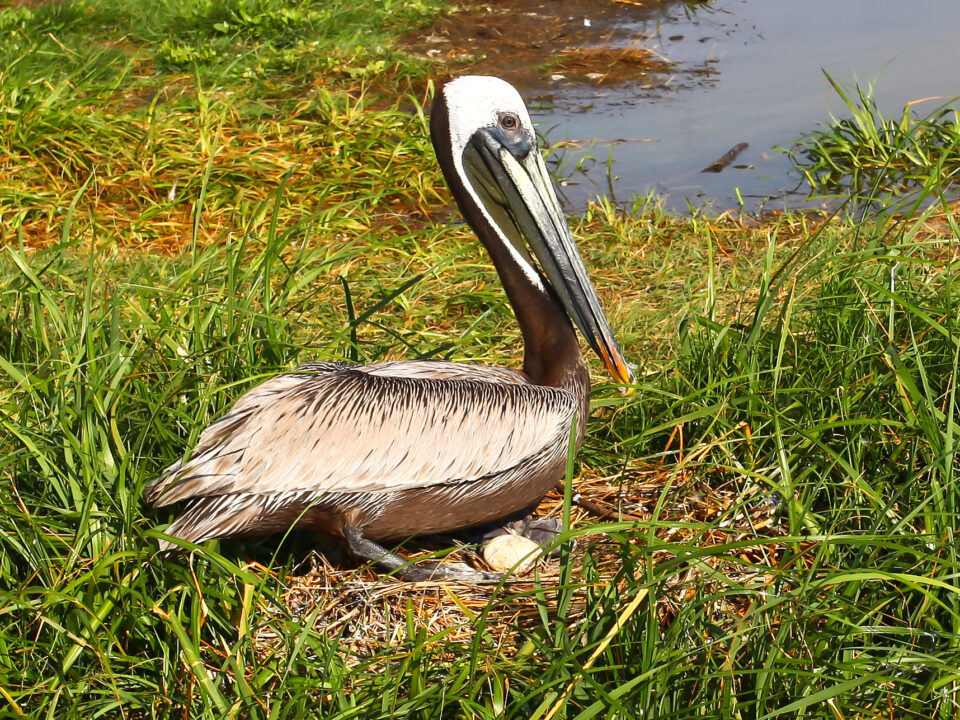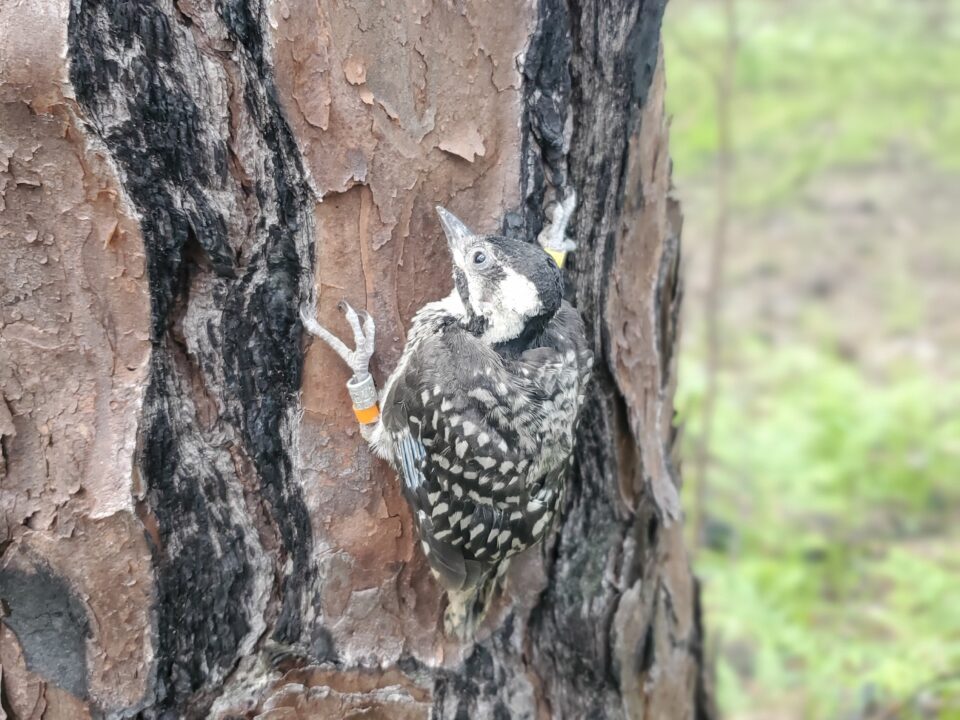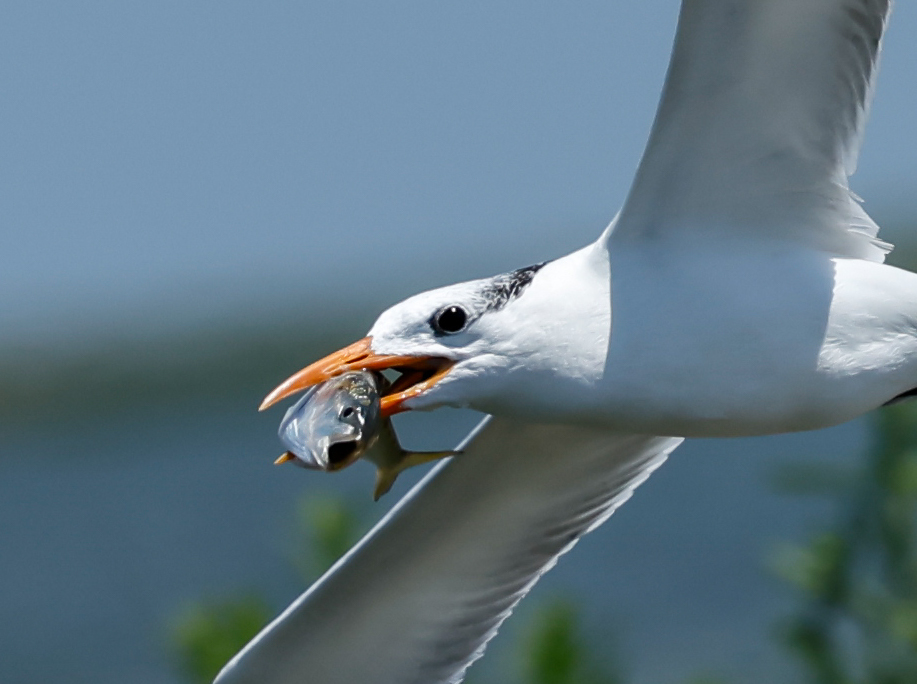Wind and waterbirds
Azalea Still in Virginia Beach Feb 27
February 28, 2010Exploring eagle roost networks
March 2, 2010
Written by Bryan Watts
March 1, 2010
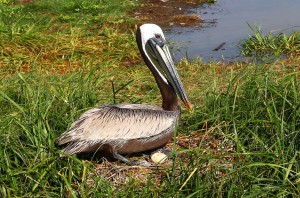
Many seabirds including the Southeastern population of brown pelicans depend on the Atlantic Coast for their entire life cycle. Photo by Bryan Watts.
In recent years, offshore wind development has become one of the fastest growing energy sectors in the world and the focus of the clean energy movement in the United States. The Atlantic Coast offers shallow, near-shore waters in close proximity to large load centers with some of the most lucrative and rapidly expanding energy markets in the nation. Wind energy along the Atlantic Coast is projected to become a 170 billion dollar industry that could significantly reduce dependency on fossil fuels. All coastal states north of South Carolina support wind development and have adopted Renewable Portfolio Standards that include an estimated 54,000 megawatts of offshore energy by 2025. To meet these collective policies with current turbine technology would require the deployment of 10-20,000 turbines in waters with less than 30-meter depth over the next 15 years.
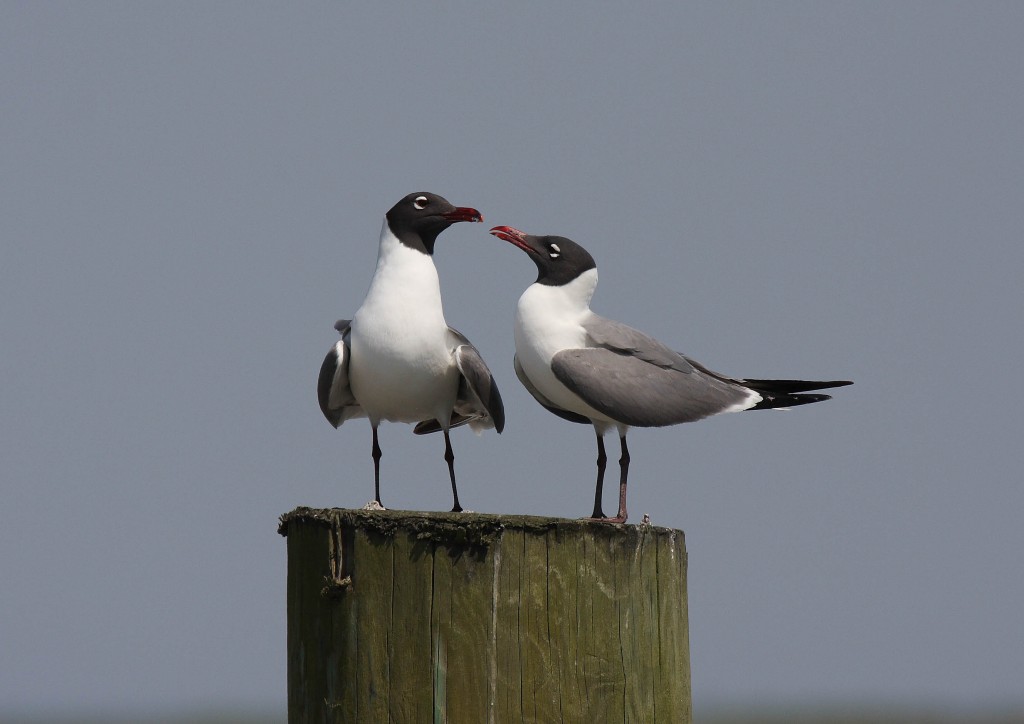
Laughing Gulls – Populations of 26 species of gulls and terns regularly utilize the Atlantic Flyway as a movement corridor including hundreds of thousands of laughing gulls such as those shown here. Photo by Bart Paxton.
The Atlantic Flyway supports one of the largest near shore movement corridors of birds in the world including many declining species of conservation concern. Much of the bird activity along the flyway occurs within a thin veneer along the coastline. Birds funnel through the flyway from a broad geographic area and their relationships to the Atlantic Coast are diverse. In addition to using the coastline as a movement corridor, many species use portions of the Atlantic Coast as migratory staging areas, breeding grounds or wintering grounds. Of particular conservation significance are taxonomic forms or populations that depend exclusively on the Atlantic Coast for some portion of their life cycle.
Build-out of the wind industry along the Atlantic Coast will result in the largest network of overwater hazards ever constructed, adding another layer of mortality to many populations that are contending with a list of human-induced sources of mortality. From a population perspective, the central question is not how many individuals are killed annually but if the focal population is able to sustain the mortality incurred and still reach management objectives. Mortality is a cumulative factor in population regulation and defining limits on human-induced mortality is a critical component of management decisions.
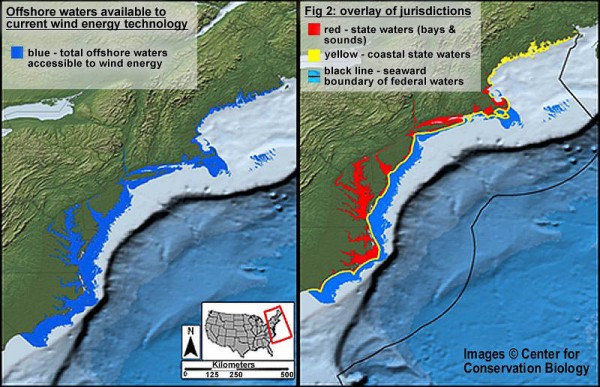
The upper western Atlantic Coast (inset shows location) illustrating Atlantic offshore waters that are accessible to current wind turbine technology (left) and an overlay of jurisdictional waters (right). Maps by the Center for Conservation Biology.
The Center for Conservation Biology (CCB) is interested in the dual objectives of reducing the world’s dependence on fossil fuels while protecting bird populations of conservation concern. In the spring of 2010, CCB completed a report to NOAA that develops a population framework for estimating sustainable mortality limits for waterbirds that utilize the Atlantic Flyway. The report evaluates 164 species associated with the Atlantic Flyway and estimates mortality limits for species with adequate demographic data. Several populations stood out as having particularly low mortality limits including the Atlantic breeding populations of roseate tern, piping plover, and American oystercatcher, the population of marbled godwit that winters along the south Atlantic, the rufa form of the red knot that uses the Atlantic Coast as a staging area during migration, and the estimated population of common loons wintering along the Atlantic Coast. Several other species for which demographic estimates are not currently available are also likely vulnerable to elevated mortality.

Northern fulmars on nesting cliff – Fulmars are one of many seabird species that utilize the Atlantic Flyway during the year. Photo by Bryan Watts.

Parasitic jaeger standing over nest – Many species that breed in the arctic spend the nonbreeding season out in the north Atlantic. Photo by Bryan Watts.
Project sponsored by the Center for Conservation Biology (CCB), Virginia Coastal Zone Managment Program (Va CZM), and the National Oceanic and Atmospheric Administration (NOAA).
Futher reading on this subject:
Watts, B. D. 2010. Wind and waterbirds: Establishing sustainable mortality limits within the Atlantic Flyway. Center for Conservation Biology Technical Report Series, CCBTR-10-05. College of William & Mary/Virginia Commonwealth University, Williamsburg, VA. 43 pp.

